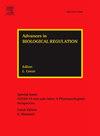The perinucleolar compartment and the oncogenic super-enhancers are part of the same phase-separated structure filled with phosphatidylinositol 4,5-bisphosphate and long non-coding RNA HANR
IF 2.4
Q1 Biochemistry, Genetics and Molecular Biology
引用次数: 0
Abstract
The liquid-liquid phase separation in the cell nucleus regulates various processes such as gene regulation and transcription control, chromatin organization, and DNA repair. A plethora of proteins and RNAs contribute to the formation of biomolecular condensates and recently, several nuclear phosphoinositides were shown to be a part of these membrane-less complexes within the nucleus as well. Here we lipid-interacting RNA sequencing (LIPRNAseq) and confocal microscopy to uncover the RNA-binding capacity and localization of phosphatidylinositol 4,5 bisphosphate (PIP2). We discovered the consensus PIP2-binding AU-rich RNA motif and identified long non-coding RNA HANR (lncHANR) to colocalize with PIP2 in the proximity to the nucleolus in the perinucleolar compartment (PNC). Colocalization studies with different nuclear markers reveal that PIP2-HANR presence in the PNC correlates with oncogenic super-enhancers, and both PNC and oncogenic enhancers are part of the same structure. As lncHANR, PNC, and oncogenic super-enhancers are associated with cancer cell lines and tumors, we suggest that they can serve as interchangeable prognostic markers. Understanding of the interplay between lipid metabolism, and lncRNAs in subnuclear compartment phase separation can lead to future improvement in treatment strategies and personalized cancer management approaches.
核仁周围区室和致癌超增强子是同一相分离结构的一部分,充满磷脂酰肌醇4,5二磷酸和长链非编码RNA HANR。
细胞核中的液-液相分离调节着基因调控和转录控制、染色质组织和DNA修复等多种过程。过多的蛋白质和rna有助于生物分子凝聚物的形成,最近,几种核磷酸肌苷也被证明是核内这些无膜复合物的一部分。在这里,我们通过脂质相互作用RNA测序(LIPRNAseq)和共聚焦显微镜来揭示磷脂酰肌醇4,5二磷酸(PIP2)的RNA结合能力和定位。我们发现了一致的PIP2结合富au RNA基序,并鉴定了长链非编码RNA HANR (lncHANR)与PIP2共定位在核仁周围室(PNC)的核仁附近。不同核标记的共定位研究表明,PIP2-HANR在PNC中的存在与致癌超增强子相关,PNC和致癌增强子都是同一结构的一部分。由于lncHANR、PNC和致癌超级增强子与癌细胞系和肿瘤相关,我们认为它们可以作为可互换的预后标志物。了解脂质代谢和lncrna在亚核室相分离中的相互作用可以改善治疗策略和个性化癌症管理方法。
本文章由计算机程序翻译,如有差异,请以英文原文为准。
求助全文
约1分钟内获得全文
求助全文
来源期刊

Advances in biological regulation
Biochemistry, Genetics and Molecular Biology-Molecular Medicine
CiteScore
8.90
自引率
0.00%
发文量
41
审稿时长
17 days
 求助内容:
求助内容: 应助结果提醒方式:
应助结果提醒方式:


